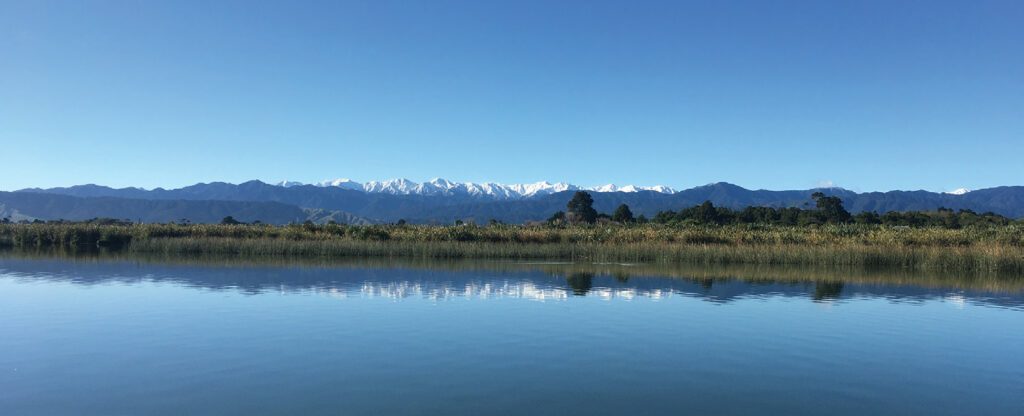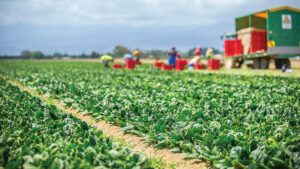By Jackie Harrigan
A substantial grant from the Covid Recovery Jobs for Nature fund has supersized plans to remediate the badly degraded water quality in Lake Horowhenua.
The lake, to the west of Levin, has been degraded over many years by the effects of sediment, nitrogen and phosphorus leaching from nearby farms, both sheep and beef and dairy, by major horticulture operations and from the impact of stormwater and urban run-off.
Lake Horowhenua is a taonga for local iwi/hapū and was once an important source of food for local iwi and a popular recreational playground.
In 2013, the Lake Horowhenua Trust, Horizons Regional Council, Horowhenua District Council, the Lake Horowhenua Domain Board and Department of Conservation formed the Lake Horowhenua Accord, a collaborative effort to invest with the crown in a number of projects related to improving the health of the lake.

The accord has implemented a range of projects including a Freshwater Clean-up fund work programme and a Te mana o te wai work programme, both of which have contributed to a range of projects to enhance the lake.
Building on the idea of a local alliance that involved local iwi, growers and community members, Horizons Regional Council has secured extra funding of $11.2 million through the Jobs for Nature fund, under the Ministry for the Environment, to build a wetland complex to reduce sediment and nutrient inputs into the lake.
The project was first planned to cover about half of a dairy farm in the catchment, however the programme was rescoped to buy the entire farm, which was purchased in June 2021. This project, co-chaired by the Regional Council Chair Rachel Keedwell and Lake Trust Chair Clinton Hemana, has a governance team that includes iwi, the Lake Trust, district and regional council.
The wetland complex development is one part of the plan to reduce both sediment and nutrients (nitrogen and phosphorus) flowing into the lake.
Weed harvesting on the lake is another strand to the clean-up project, along with an investment of $4-5m from the Horowhenua District Council on stormwater upgrades. Lake weed alters the chemistry of the lake by increasing the pH of the water, lowering the nitrate concentration (raising the toxic ammonia concentration) and providing a favourable environment for phosphorus release and promoting cyanobacteria blooms.
Harvesting weed interrupts this cycle and provides an environment more favourable to fish and other aquatic life, including native lake plants.
Horizons chair Rachel Keedwell says the wetland complex and weed harvesting are two significant projects that partners are pleased to have underway.
“Both are complementary to a number of other past and planned interventions that will help restore pride and mana to Lake Horowhenua and enhance its social, cultural, environmental and economic values.”
Farm consultant and Lake Horowhenua trust co-chair Clinton Hemana is excited by the progress made by the trust and says the plans for remediation are a step in the right direction.
“The owners of the lake, Muaūpoko, have been disappointed in how the lake has been treated in the past but they are pleased that progress is being made in the right direction and think it’s neat that the whole community is coming together to have an input.”
Stakeholder group consultations will start soon, Hemana says, and the locals will be invited to come in and have a say on what they would like to see for the Lake.
“We want to build a big masterplan, and then see how much it will cost and where we want to spend that money – we will have to go out for more funding too.”
Hemana mentions ideas of walkways and mountain bike tracks and building a Pa harakeke where flax is grown in the wetland area, removing nutrients and to be used for economic sustainability.
Along with reducing the amount of excess nutrient entering the lake through the wetland initiative, plans are underway to cut excess nutrients being used and lost in the catchment.
Sheep and beef farms cover about 43% of the lake’s total 7000ha catchment while dairying makes up about 19%.
The 11 dairy farmers in the catchment were consented under the Horizon’s One Plan but now await implementation of Plan Change 2. All are required to implement farm environment plans covering water and nutrient use, effluent processing, riparian planting and numerous other initiatives with possible new standards coming under the National Policy for Freshwater 2020.
The catchment is also one of New Zealand’s most important horticulture areas, with 13 vegetable growers growing producing about 10% of the country’s supply of green vegetables in the highly fertile Arawhata sub-catchment.
Alongside the wetland development Michelle Sands, HortNZ environment manager, says growers are developing and fine-tuning their farm environment plans (FEPs) to improve growing practices.
The certified FEPs help growers look at ways to reduce sediment and nutrient run-off (including use of sediment ponds and buffer strips) and will be independently audited.
The implementation of soil testing prior to planting is helping establish ‘careful application of fertiliser’.
Sands says the mild climate and good soil in Horowhenua make it one of the best places in NZ for horticulture. More than 38 vegetable varieties – including cabbages, leafy greens, Chinese greens, salad crops, potatoes and onions – are grown on a total of 500ha by the catchment’s growers.
A Sustainable Farming Fund project called Future Proofing Vegetable production, completed with co-funding from the regional council, is further looking at strategies in the paddock for minimising nutrient loss, sediment loss and in particular nitrogen loss from the horticulture soils. The research and extension is being undertaken by LandWISE, researchers into precision agriculture.

The project focuses on developing and testing new production techniques for vegetable growers including precise nutrition prescription, precise application, maximising retention of nutrients, and recapturing nitrate that moves beyond the rootzone. The overall aim is to reduce nutrient leaching and improve efficiency while maintaining production. The key outcomes are use of the nutrient budget developed by LandWISE by growers in the crop planning stage to ensure planned fertiliser practice follows industry good practice.
An online app version is currently in development.
Adoption of the Nitrate Quick Test soil test will be used to validate any additional fertiliser applications. More regular calibration of the growers’ fertiliser equipment has shown that there can be large variation in application, and improving this practice will help to identify issues early. Understanding of nitrate pathways has improved with growers through the use of Nitrate Quick Tests.
The Horowhenua Freshwater Management Unit water quality interventions project will be lodged for consents by 2022, construction aims to start in 2022/23 with the first build phase aiming to be completed by 2024, Lake Horowhenua Trust Chair Rachel Keedwell said.
The project is also about employing locals in ‘Jobs for Nature’ and plans are in place to employ one Freshwater Coordinator and three monitoring/science staff. Later planting and construction will provide up to 45 jobs, according to the project proposal.
The project is a collaboration between Muaūpoko, Lake Horowhenua Trust, Ngāti Raukawa ki te Tonga, Horizons Regional Council, Horowhenua District Council, dairy farmers, horticulturalists and the wider Lake Horowhenua community.





